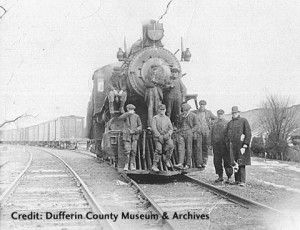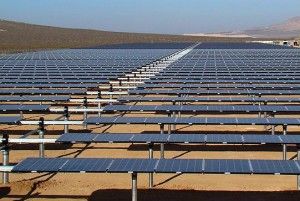New High-Speed Rail Plan Runs Over Prop. 1A Mandates
April 2, 2012
By Katy Grimes
As California politicians show more desperation to build any part of the California High-Speed Rail system in order to get their hands on $3.5 billion in federal stimulus money, the plan is looking more like a whack-a-mole game. But every hole that is plugged, every detail that is softened or tweaked, and every cost estimate that is changed causes a bigger problem. The cover-up is worse than the original crime.
It is important to remember that high-speed rail is not really about achieving sexy world-class transportation for the purpose of serious people moving. It’s just a pipeline project for grabbing big money. Because of the illegitimacy of the project’s intent, the mole could be permanently whacked, and leave California taxpayers holding the bill.
The most recent miracle cure was yesterday’s announcement of the newest revised business plan, in which the cost of the project will be reduced to $68 billion from $98.6 billion by expanding the 130-mile line from Fresno to Bakersfield, to Merced to San Fernando Valley, for a 300-mile segment.
But there is quiet talk about electrifying only some of the track, and using pre-existing Amtrack rails. “Instead of building costly new raised viaducts and underground tunnels, the high-speed trains would run where possible on existing lines, such as Caltrain’s Peninsula infrastructure,” the San Francisco Examiner reported. But existing track cannot accommodate the 200 mph. The new business plan makes this just a train, not high-speed rail as was required by Proposition 1A, the 2008 ballot initiative authorizing the train.
Houston, we have a mandate
With politicians and High-Speed Rail Authority officials working all last year to smooth over the complex and conflicting details of the bulging $98 billion High-Speed Rail plan, oddly enough, they’ve created an even larger problem than the growing dissent by the voters. They are now violating important mandates in the 2008 law.
Proposition 1A, $9 billion in bonds for high-speed rail, included numerous mandates, none of which can be legally bypassed on the way to building the massive train system.
Top on the list is that the rail system must be high-speed. “Electric trains that are capable of sustained maximum revenue operating speeds of no less than 200 miles per hour,” the law states. However, much of the first segment between Fresno and Bakersfield is not high-speed; nor will high-speed be attainable in dense cities.
Rail Authority Chairman Dan Richard recently said at a legislative hearing that the Rail Authority “never intended, our business plan does not contemplate, that we would operate a high-speed rail system only in the Central Valley.”
Mandates
But his statement runs counter to Proposition 1A:
* Prop. 1A stipulates 11 requirements that must be met before funds can be released for the construction of a “corridor” or “usable segment.” Specifically, some of these requirements include actual high-speed train service, ridership, revenue projections and planned passenger service.
* “The high-speed train system shall be planned and constructed in a manner that minimizes urban sprawl and impacts on the natural environment,” the law states. But the impact of the rail system may actually create suburban communities around train stations within reasonable distances from urban areas and higher employment areas.
The train system will also dissect both urban and rural communities which will be problematic, as well as a serious violation of the “natural environment.” The trains will travel through densely populated cities, but also through sensitive agricultural and natural areas in the state.
* The success of any legitimate transportation system must be based on connectivity. “For each corridor described in subdivision (b), passengers shall have the capability of traveling from any station on that corridor to any other station on that corridor without being required to change trains,” the law states. “Stations shall be located in areas with good access to local mass transit or other modes of transportation.” This means that unless there are extensive connecting rail systems already in place in the high-speed rail destinations, cab companies, limo services and car rental companies should be lining up to rent space in the train stations. Commuters will not have the necessary train and bus systems to transfer to with the existing plan.
* The California High-Speed Rail Authority must have all of the the funding ahead of time, before any construction starts on a new segment.
* The high-speed train system must operate on its own entirely, and in the black. That means operating profitably, and includes caveats of no government subsidy. The plan relies heavily on a projection of 100 million users by 2030, a notion that was created with manipulated data, and is absurd.
Assemblywoman Diane Harkey, R-Dana Point, has railed consistently against the implementation of the plan. Even though voters were deceived by the ballot summary and language, Harkey has said that the entire project is lacking in private, public and debt funding to complete even the most minor operating segment.
In addition, Harkey has said the mandatory Environmental Impact Report for the system is not complete. Yet the law calls for certified EIR’s for each segment of the system. California already is running endemic budget deficits. Yet Gov. Jerry Brown is pushing for additional and higher taxes. State officials have been ignoring the state’s infrastructure needs and massive maintenance and repair.
Fortunately, voters are now suspicious about the rail system they approved in 2008.
With all of this information available, who or what keeps pushing for the already bankrupt rail system to begin construction?
Follow the money
One need not look any further than the utility bills that come in the mail. Pacific Gas &Electric and Southern California Edison will be providing the electricity for high-speed rail, with estimates of additional demands for electricity already coming in at 1 percent to 5 percent of the state’s total energy usage, according to a Capitol staffer who asked to remain anonymous. “Even Cal ISO doesn’t have any estimates for the cost,” the staffer said. “High-speed rail has got to consume a great deal of power. Where will the power come from?” 
Surprisingly, the California Independent System Operator has no estimates for energy usage about high-speed rail on its website, as would be expected given the size and scope of the project.
But according to a July 2011 energy usage analysis prepared for the California High-Speed Rail Program Management Team, total electricity usage for the proposed rail system would be “8.32 million kilowatt-hours (kWh) per day,” and more than 3 billion kWh per year.
The average three-person household in California is about 6,000 kWh per year, or a little more than 2,000 KWh per person.
According to the California Public Utilities Commission, electricity customers in the state paid an average rate of about 15.2 cents per kWh.
At 15.2 cents per kWh, the total utility bill for high-speed rail would be nearly $1.26 million per day, and more than $460 million per year. And that’s probably a very conservative estimate.
Show me the money
Along with every imaginable labor union in the state, a report from “Follow the Money” shows that PG&E spent $20,000 in support of Prop. 1A in 2008.
Both PG&E and SCE also have given large campaign contributions to Gov. Jerry Brown, who actively campaigned on the high-speed rail issue when he ran for governor in 2010. Brown received $31,580 from PG&E during his gubernatorial campaign, and $25,000 from SCE.
While those investments seem relatively small for a $460 million per year payout, how many clients of PG&E and SCE currently use up to 5 percent of the state’s total electricity?
And who could forget the other big PG&E connection? Brown recently appointed High-Speed Rail Authority Chairman Dan Richard, a former senior vice president of public policy and governmental relations at PG&E.
Where will the power come from?
With California’s climate-change mantra of “no dirty coal,” “no natural gas,” no hydroelectricity” and “no nuclear power,” many wonder if the high-speed trains will be powered by windmills, solar panels and algae.
Remember that California passed the climate change law, AB 32, in 2006, and the Renewable Portfolio Standards mandate in 2011. Both greatly restrict energy usage, and force energy producers to get 33 percent of their electricity from renewable resources.
There isn’t enough wind, sun or algae in the Western Hemisphere to power a 200mph train up and down the state.
With the state taking the Klamath hydroelectric dam offline, cutting coal reliance, refusing to reinvest in nuclear power and essentially creating an energy shortage, when California has another inevitable blackout, what will be powered — our homes, or the high-speed train? Hospitals, or the high-speed train? Schools, or the high-speed train? Businesses, or the high-speed train?
The Legislature is creating a massive energy problem in California, and refusing to do anything about it. But maybe, just maybe, the law will rescue the voters this time.
Related Articles
Uneasy Riders
JUNE 18, 2010 The key is how many will ride the train. That’s all: how many people, say, 15 or
Tell us about our new design
As you can see, we have redesigned CalWatchDog.com. In the comments area below, please tell us what you think
New PM Abbott dumps Aussie carbon tax
Last weekend Australians voted the ruling Labor Party from power. The Opposition Coalition led by Tony Abbott of Australia's conservative




